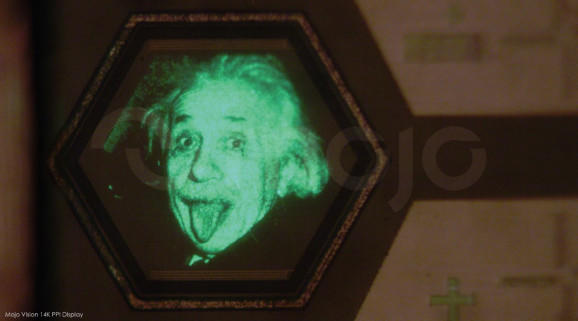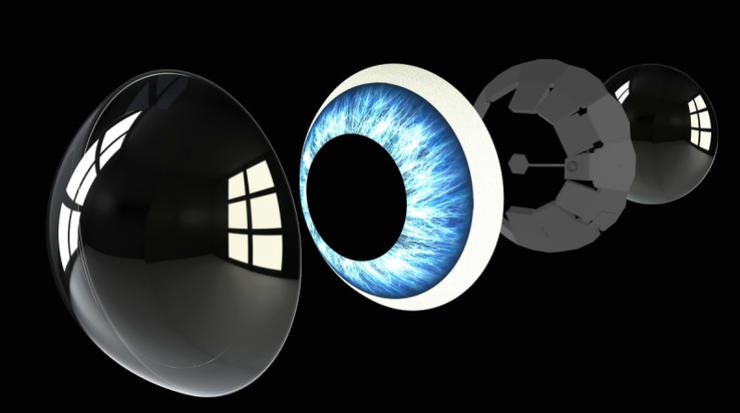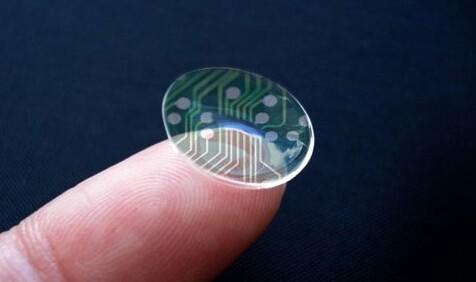There are always some innovations, which make people feel that the future has come. For example, if you wear a contact lens on the front of the micro vision AR, you can see the image on the front of the micro contact lens.

When contact lenses meet ar: can see the reality can also enhance the reality
Abstract: there are always some innovations that make people feel that the future has come. For example, mojo vision, an AR start-up company in the United States, has designed a smart contact lens with a built-in micro display screen. Users can see the AR image on the screen in front of their eyes as long as they wear contact lenses. At the end of 2015, CEO drew Perkins, CTO Mike wiemer and CSO (chief scientific officer) Michael Deer
There are always some innovations, which make people feel that the future has come. For example, mojo vision, an AR start-up company in the United States, has designed a smart contact lens with a built-in micro display screen. Users can see the AR image on the screen in front of their eyes as long as they wear contact lenses.
Black technology can satisfy the love of beauty
In late 2015, mojo was co founded by CEO drew Perkins, CTO Mike wiemer and CSO (chief scientific officer) Michael Deering Vision’s top management team includes silicon valley veterans from apple, Amazon, Google and Microsoft, and medical equipment and optometry experts from Cooper optics, Abbott, Johnson & Johnson, Medtronic, Philips healthcare and Carl Zeiss.
In addition, mojo vision has raised more than $108 million from NEA investment, Shanda group, kosla venture capital, Advantech, gradient venture capital (owned by Google), HP technology venture capital, Motorola, LG Electronics, liberty global, fusion fund and other companies.
In 2017, mojo vision made the first lens with a wired power supply and a single LED light, and then began to focus on radio and optical systems that focus images on the back of the user’s retina.
At the world augmented reality Expo in May 2019, mojo vision, which focuses on the “invisible computing” AR (invisible computing augmented reality) integrated development platform, demonstrated a new prototype of micro display screen, which can see the monochromatic image of Einstein’s tongue.

In 2020, mojo vision has exhibited the prototype of its latest product, smart contact lens, on CES. After wearing this contact lens, users can see the green words and numbers appear on the objects in the real world. If someone comes up, the user can also use “ar Overlay” to recall the other person’s name. At present, the prototype has been designed, but it has not been put into mass production.
This intelligent contact lens has three more proprietary technology breakthroughs than ordinary contact lenses:
Micro screen: it is the micro display screen launched by mojo vision in 2019 – the smallest and densest dynamic display in history, with pixel spacing of 1.8 μ m, sub pixel spacing of more than 14000 PPI, and sub-pixel density of more than 200m PPI; the display screen is based on microled, which is expected to be the next generation of wearable devices, AR / VR Hardware and HUD play a key role in the development of hardware and HUD. The power of microled is 10% of the current LCD display, and the brightness is 5-10 times higher than that of OLED, which means that microled display can also be viewed comfortably outdoors;
Image sensor: the world’s most energy-saving image sensor optimized for computer vision;
Motion sensors: motion sensors similar to accelerometers and magnetometers for eye tracking and image stabilization to understand what the user is looking at.
Steve Sinclair, senior vice president of product and marketing at mojo vision, said:
We want this smart contact lens to fit the eye like a jigsaw puzzle, without sliding. Soft contact lenses often encounter the problem of sliding blades, and we adopt rigid contact lenses, and at the same time, built-in oxygen cooperation, so it can ensure long-term comfortable wear.
In fact, contact lenses are divided into soft contact lenses and hard contact lenses. The contact lenses we usually refer to are only soft contact lenses. However, only optometry centers, hospitals and medical units carrying out laser surgery have the equipment and qualification for fitting, which are usually used for clinical correction of near vision.
It is reported that this kind of smart contact lens is more like “beautiful pupil”. After wearing, the pupil will show different colors, which should satisfy the user’s love for beauty. Moreover, each type of glasses will be customized according to the size of the wearer’s pupil and other factors.

According to Steve Sinclair, mojo vision has a patent for AR smart contact lenses. Mojo vision independently developed relevant hardware and technology, including display screen, oxygenation system, power data, asics (custom chip) and power management tools. Currently, eye tracking algorithm is being developed.
Mojo vision CEO drew Perkins said in a statement that the smart contact lenses will only display useful information when users need them, and will not bombard data or distract users’ attention all the time.
Recently, in an exclusive interview with Steve Sinclair, a reporter from VentureBeat has made some experience. He interacts with the screen with his eyes throughout the whole process. For example, looking to the left means clicking on the page, and looking at the arrow can make choices. It is reported that the screen also supports voice control, providing real-time contrast, lighting enhancement and zoom functions.

Steve Sinclair said:
We’re focused on clarity, mobility and usage scenarios, and we’re going to focus more on software in the next few years. However, the current ar glasses do not support playing games.
Helping the visually impaired
Is the target users of such black technology limited to young people?
This intelligent contact lens is designed for both individual consumers and enterprises. Its main development direction is to help people with weak eyesight by means of enhanced image superposition.
On the one hand, mojo vision is working with it through the FDA’s breakthrough device program. The program is a voluntary project designed to provide safe and timely medical equipment to help treat some irreversible failing diseases.
There is no doubt that this will prompt FDA to put mojo vision on the fast track of its breakthrough device program, which works directly with FDA experts to obtain feedback and priority reviews to develop products that comply with safety regulations and standards.
Mojo vision, on the other hand, has announced a new partnership with the vista Center for the blind and visually impaired in Palo Alto, California, which provides rehabilitation services to more than 3000 people who are blind or visually impaired each year. With this smart contact lens, people with weak vision can better recognize shapes such as street signs, because the display will help the wearer identify what is in front of them and enhance their vision.
Karae Lisle, executive director of Vista, said in a statement that the technical cooperation provides opportunities for visually impaired people to improve their vision and quality of life.
At the same time, people receiving rehabilitation services at the vista center will also play a direct role in defining mojo vision’s innovative technologies and helping mojo vision’s team of scientists and engineers, thereby helping mojo vision bring more optimized and user-friendly devices to market.
Using this technology, mojo vision is working to help 2.2 billion people with impaired vision. Mojo vision wants people with impaired vision to use contact lenses for everyday activities like crossing the road. With the approval of the ethics review board (IRB), mojo vision is conducting a feasibility clinical study for R & D iteration purposes, and mojo vision may also establish a medical devices department in the future.
Smart contact lenses have a precedent
In fact, it’s not the first time we’ve heard of such black technology.
In 2014, Verily, the health and Life Sciences Division of alphabet, the parent company of Google, announced a partnership with Alcon, the eye care unit of Novartis pharmaceutical company in Switzerland, to launch “Google contact” Lens (Google contact lens) project aims to use the circuit and chip in contact lens to measure the blood glucose level of diabetic patients through the blood sugar level of tears, which causes a sensation for a moment.

However, in November 2018, verily suddenly announced that due to the “lack of correlation between tear glucose and blood glucose”, the research and development work was stopped, and the “Gospel of diabetes patients” that people had been waiting for for for four years was not over.
In addition, in 2016, Samsung applied for a patent for smart contact lenses. It plans to have a built-in display screen, camera and sensor in the smart contact lens. Users can control these components to take photos by “blinking” and project the pictures directly to their eyes.
In May of the same year, Sony applied for a patent for smart contact lenses that can take videos and photos.
However, up to now, none of the above patents have been applied to contact lenses.
Although mojo vision is still in the research and development stage, it seems that it can only be described as “mixed”.
First of all, compared with the above-mentioned intelligent contact lenses, mojo vision first proposed the concept of AR, which is eye-catching; secondly, compared with the AR devices which focus on entertainment function in the market, mojo vision has put forward the concept of AR for the first time At the same time, the black technology behind the products is basically equal to the high price, so it is hard to say whether consumers will buy it.
What is the future fate of this ar smart contact lens? Let’s wait and see.

